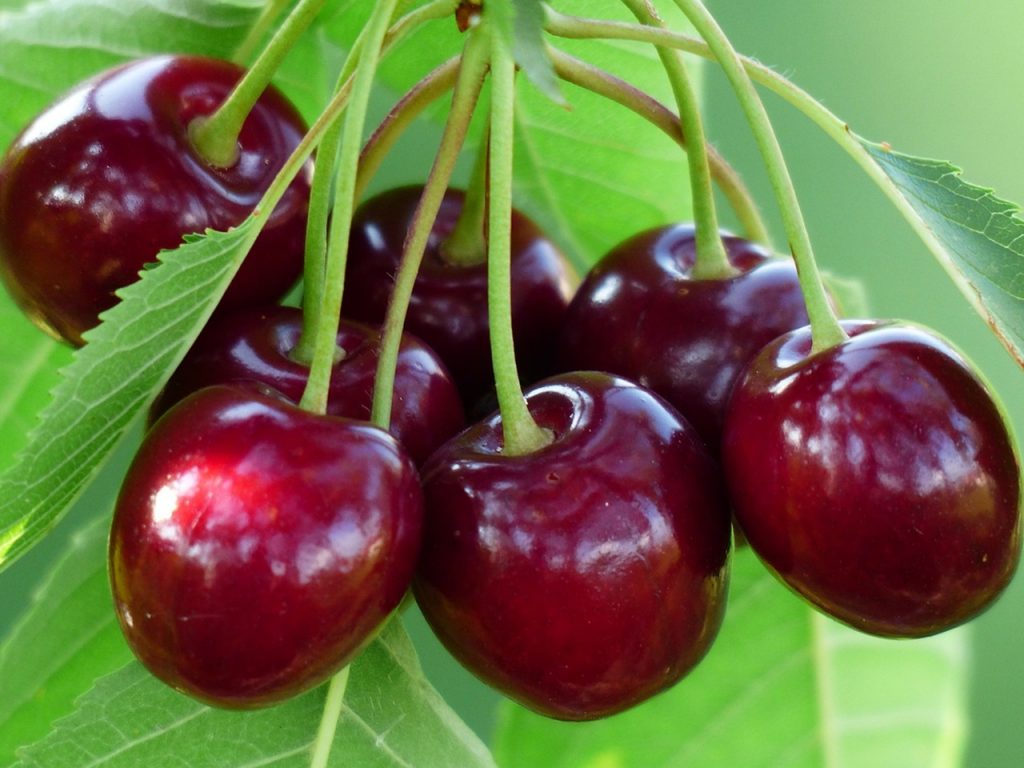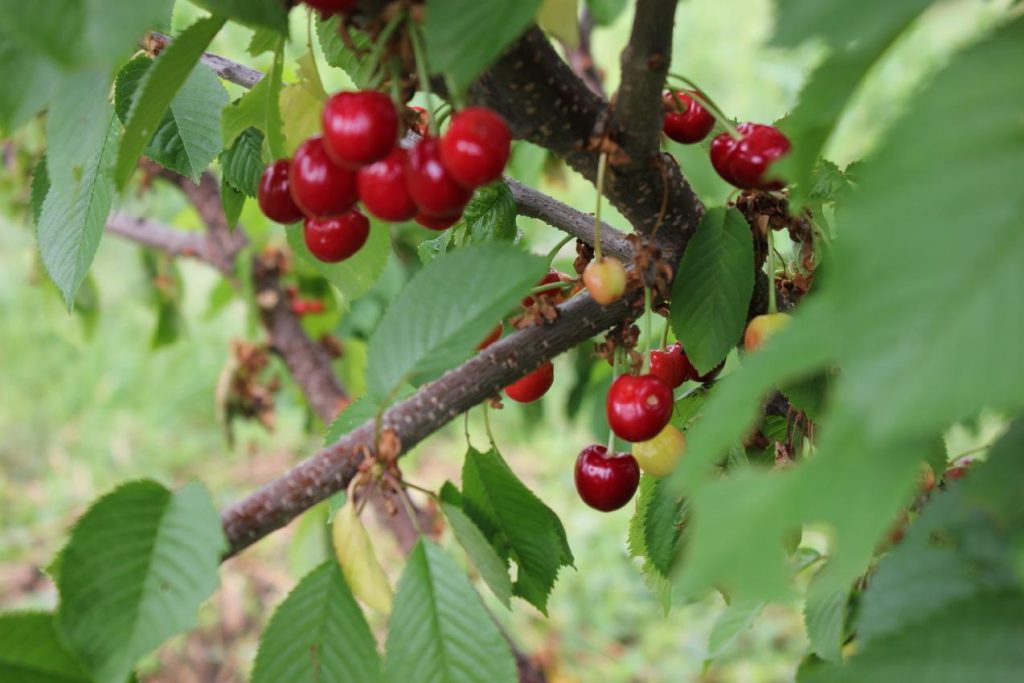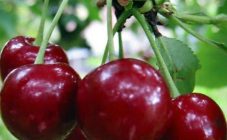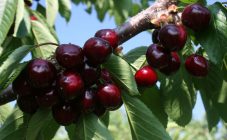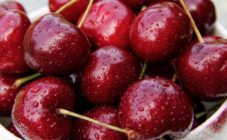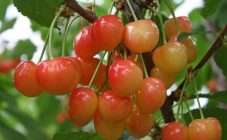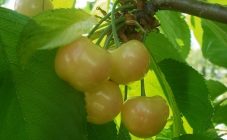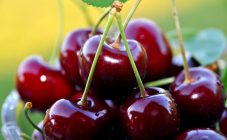Content:
Cherry Bryanochka is included in the list of the most favorite varieties, it is she who is preferred by many gardeners and gardeners. Fresh berry with a wonderful sweet taste is great for making homemade preparations: preserves, compote and jam, it can also be eaten fresh. At the same time, the culture is very unpretentious.
General information about culture
The Bryanochka cherry variety was the result of a long experiment, during which breeders crossed two types of berries: 8-14 and Red dense. The All-Russian Scientific Research Institute of M.V. Kanshina conducted a unique study, the result of which is the Bryanochka cherry.
In 2006, it was decided to enter this variety into the Unified State Register.
Characteristics and description of the Bryanochka cherry variety
Tall cherry trees of Bryanochka reach 3.5 meters in height, and begin to bear fruit after five years after they were planted in the ground. The harvest is late, so it will be possible to enjoy the first berry only in the second half of July.
The oval-rounded crown does not differ in density, and the branches have moderate spreading. At first glance, the tree may look like a shrub. The advantage of this cherry variety is that the tree has rather sparse foliage, due to which the sunlight better penetrates the berries. The large leaves are oval and slightly jagged. With the onset of spring, the tree is decorated with inflorescences, each of which has 3 buds. The shade of flowers is pure white or pink, and their petals do not touch each other. Anthers and pistils have one level of arrangement (in some cases, the pistils may be slightly higher, which is also the norm).
To actively bear fruit, Bryanochka needs pollinators, the following varieties are perfect:
- Tyutchevka;
- Veda;
- Iput.
Trees must be planted together so that pollination occurs at the same time and the berries appear in one year. Ripe fruits are bright red in color, as well as their pulp. The average weight of one berry is 4.5 g, and the maximum mark sometimes reaches 7 g. Fruits are heart-shaped and wide, with a flattened base and a pointed tip.
Cherry pulp Bryanochka has a dense and juicy structure, as well as a sweet taste. All fruits with an oval medium-sized pit inside, the mass of which is approximately 6% of the total weight of the cherry. The beautiful Bryanochka berries are popular due to their taste, their tasting score is 4.7 points. The cherry berry contains the following components:
- ascorbic acid - at the rate of 16 mg per 100 g of berries;
- dry matter - 18%;
- sucrose - 12.3%.
The yield of sweet cherries Bryanochka is average, from 94 to 300 c / ha. This is provided that there is no severe frost, when the tree is actively blooming.
Features of growing sweet cherry Bryanochka
The date of planting seedlings in open ground depends on what weather conditions and climate prevail in the area where the tree is to be grown. In areas with a mild climate, trees can be planted in late October-early November, before the first frost. Northern regions with harsh winters keep farmers waiting for spring.In March-April, the cuttings should be placed in the ground, but it is imperative to make sure that the buds do not swell before planting.
In order for Bryanochka to bear fruit and grow well, you need to choose an area with slopes that will not allow moisture to stagnate for a long time.
It is recommended to plant seedlings in such areas:
- southeastern;
- southern;
- southwestern.
The land plots should be well warmed up, the sun's rays should penetrate well, protection from the east and north winds should be provided. It is highly discouraged to choose clay, peat or sandy soil for growing sweet cherries. The tree loves sandy loam soil or fertile loams.
In order for the cherry to grow well and bear fruit in the future, it is necessary to choose beautiful and strong cuttings, since the choice of planting material plays an important role. It is not recommended to buy the first seedlings you like at the market or in a specialized store, they must be carefully examined.
Another advantage is a large number of branches, from which the crown of a tree is easily formed, and special attention should be paid to the conductor. You should not buy seedlings with weak and unhealthy conductors, as well as those with multiple conductors. In the future, this will lead to the breakage of the tree or even to its death. The root system must not be dry or damaged. When transporting seedlings, the roots are wrapped with a damp cloth, and then with an additional polyethylene layer. If the seedlings have foliage, it must be removed, because it does not allow moisture to flow to the roots.
Before planting, the root system must be examined for weak roots and cut off. After that, it is recommended to place the seedling in a container with water for a couple of hours, and if the root system is dry, it needs to be soaked for 10 hours. Before immersing the tree in the ground, treat the roots with mud or clay gruel.
Place the seedling in a planting pit, flavored with humus and fertilizers, carefully spread the roots along an earthen embankment, which must be built two weeks before planting. Then you need to fill the hole with the lower layer of soil, tamp and pour 10 liters of water. The root collar should stick out about 5 cm above the ground.
A trench is dug around the entire circumference of the trunk for irrigation.
If it was decided to plant two or more seedlings, it is imperative to maintain a distance between trees, about 5 meters. Cherry Bryanochka is a medium-sized tree, but large, so you need to provide enough space for it to grow and develop. Saplings can be planted next to berry bushes such as currants, raspberries and gooseberries.
In order to properly process branches that have been prone to frostbite, experts recommend using a garden var, consisting of beeswax, rosin and internal fat. Wait until the air temperature reaches +20 degrees, and then spray the trees to protect them from various diseases. Fertilizers that were used in the planting process are able to protect the tree for 3 years, then the Bryanochka cherry must be fertilized with minerals.
In summer, the soil must be loosened periodically. In case of deicit sediment, water the seedling at least 5 times during the entire season. At the first signs of a tree disease, you must immediately treat it with a decoction in order to avoid the death of the crop. Cherries must be loosened, getting rid of broken twigs and new shoots, as this contributes to the formation of the crown.
Sweet cherry Bryanochka is included in the group of winter-hardy varieties, adult trees can easily withstand severe winter frosts. But seedlings that are less than 3 years old must be surrounded by protection from a layer of burlap or spruce branches. Such a cozy and warm "fur coat" will help the cherry to survive the winter, avoiding frostbite. It is strictly forbidden to use unnatural material for insulation purposes, for example, lutarsil. It can cause trees to mate, rot and die.
Advantages and disadvantages of the variety
The positive aspects of Bryanochka include disease resistance, which affects many other varieties of cherries. Also, the advantages of this type of culture are:
- increased frost resistance;
- high yield;
- great sweet taste of berries.
A significant disadvantage of the Bryanochka sweet cherry is its susceptibility to gray rot. Improper tree care and over-watering can lead to it.
In general, based on the many reviews from gardeners, we can conclude that people like the Bryanochka cherry. Jam, cherry compote, jam are cooked from its fruits, they are eaten fresh with berries. Sweet cherries are great for home preservation for the winter, as they require a minimum amount of sugar to prepare them. And all because the fruits of the Bryanochka sweet cherry are already very sweet.
